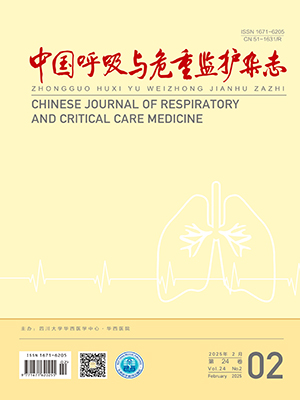Objective To investigate changes of TLR2 mRNA expression in lung of a mouse model of Chlamydia Pneumoniae pneumonitis, and to explore the possible mechanism of signal transduction. Methods Ninety-six male C3H/HeJ mice were randomly divided into four groups as follows: a control group, a model group, a SB203580 intervened group, and a pyrrolidine dithiocarbamate( PDTC) intervened group. Chlamydia Pneumoniae pneumonitis was induced by intranasally inoculated with 4. 0 ×106 IFU/mL of C. Pneumoniae per mouse in the model group and two intervened groups. Then the intervened groups were intraperitoneally injected with the p38MAPK inhibitor SB203580 and nuclear factor kappa B ( NF-κB)inhibitor PDTC, respectively. Six mice in each group were randomly killed in 1st, 4th, 7th and 14th day. The expressional changes of TLR2 mRNA in the mice lung tissue were measured by semi-quantitative RT-PCR. The concentrations of TNF-α in the lung homogenate were measured by ELISA. Results TLR2 mRNA expression in the lung tissue significantly increased after C. Pneumoniae infection, peaking at 4th and 7th days, then decreased after 14th day. Tumor necrosis factor-α( TNF-α) was also elevated in the lung tissue after C. Pneumoniae challenging. Both SB203580 and PDTC treatment effectively inhibited TNF-αand TLR2 mRNA expressions in lung. The inhibitory effect was more obvious by SB203580 treatment. Conclusion C. Pneumoniae can upregulate the expressions of TLR2 and TNF-α in lung, and TLR2/MAPK and TLR2 /NF-κB signal pathways may be involved in Chlamydia Pneumoniae pneumonitis.
Citation: DONG Jing,SHI Yi,SONG Yong,SONG Yingjian.. Gene Expression of TLR2 in Lung and Its Potential Signal Transduction Mechanism in a Mouse Model of Chlamydia Pneumoniae Pneumonitis. Chinese Journal of Respiratory and Critical Care Medicine, 2009, 09(3): 267-270. doi: Copy
Copyright © the editorial department of Chinese Journal of Respiratory and Critical Care Medicine of West China Medical Publisher. All rights reserved




